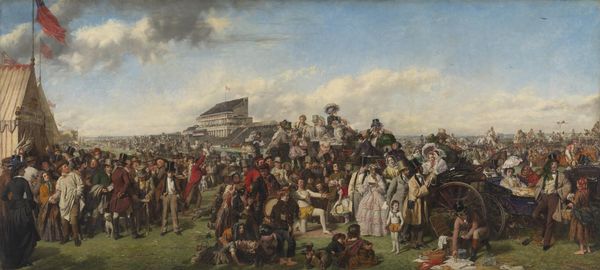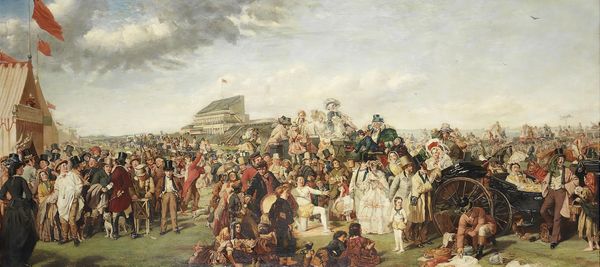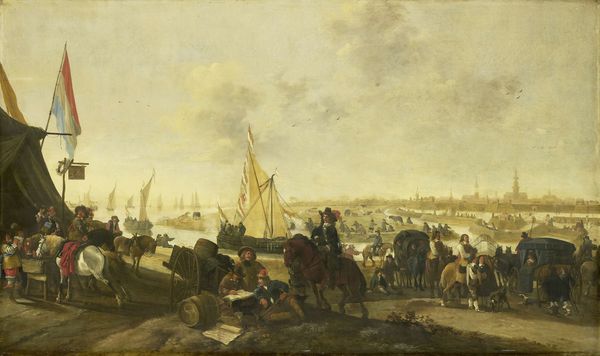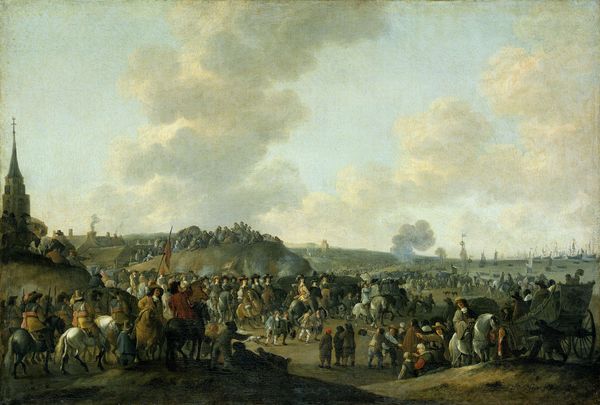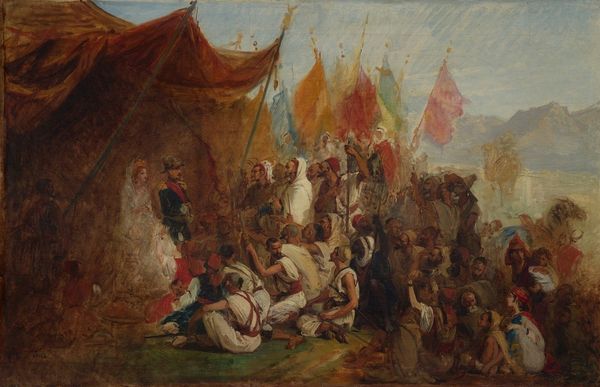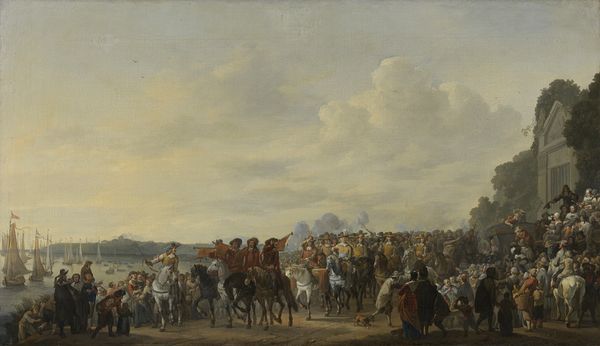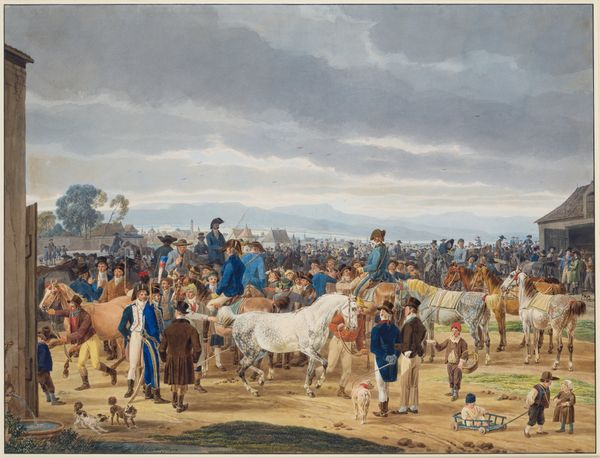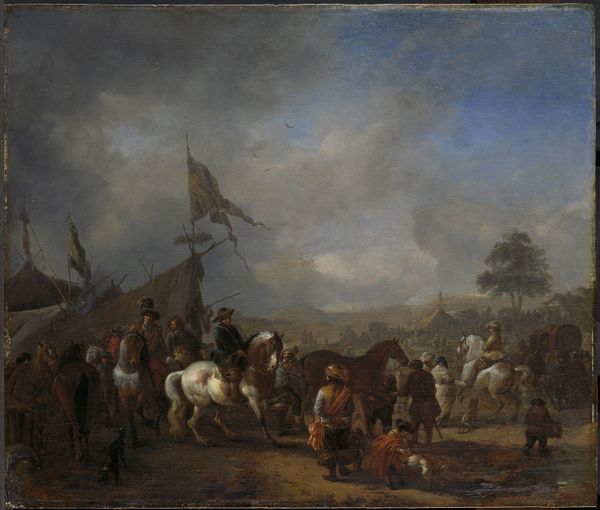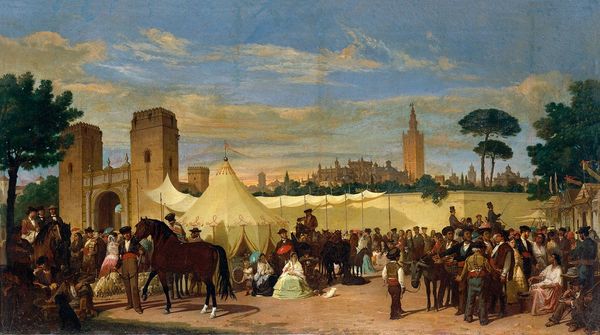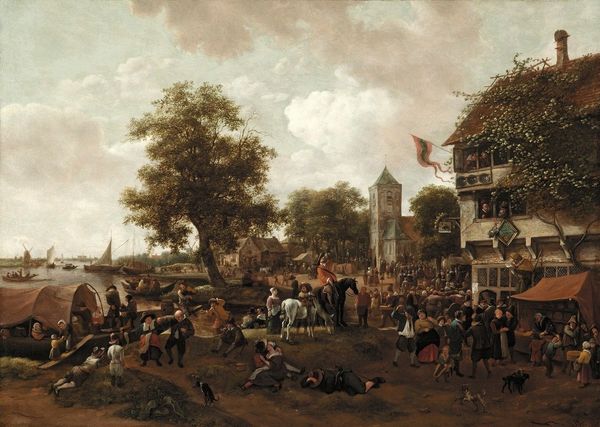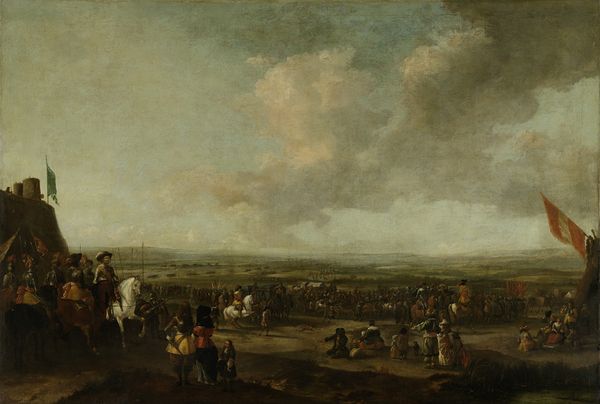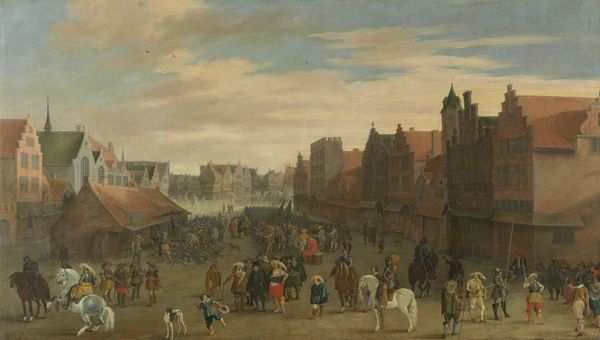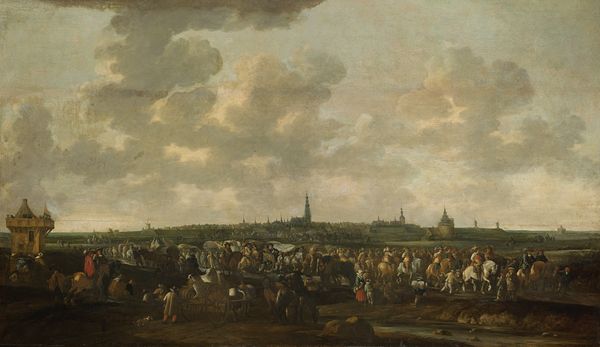
Dimensions: support: 1067 x 2108 mm
Copyright: CC-BY-NC-ND 4.0 DEED, Photo: Tate
Curator: Erskine Nicol's "Donnybrook Fair" shows us a teeming crowd, almost overwhelming in its density. I'm immediately struck by the sheer scale of it. Editor: It feels…cacophonous. Like a mosh pit from the past. All those bodies pressed together, each with their own agenda. What do we know about these fairs? Curator: They were these raucous gatherings, deeply embedded in Irish social life but often viewed with suspicion by the authorities. Think of them as spaces where class lines blurred, but also where tensions could easily ignite. Editor: So, this isn’t just a record of a fair; it’s a snapshot of social dynamics and, potentially, class conflict made visible through the making of the painting, the canvas, the paint itself. Curator: Absolutely. Consider the way Nicol uses the oil paint, almost blurring the individual faces, making them part of a collective. This choice highlights the lack of individual agency within a larger cultural context. It asks us to consider not just what they’re doing, but why. Editor: Fascinating. It makes you wonder what the materials, the tents, the games represented to them—escapism, a chance for upward mobility, or just a temporary reprieve from harsh realities? Curator: Indeed. It's a potent reminder that even in moments of apparent leisure, social structures and material realities are always at play. Editor: Well, I’ll certainly be thinking about the hands that built those booths and the conditions that brought everyone together after this conversation.
